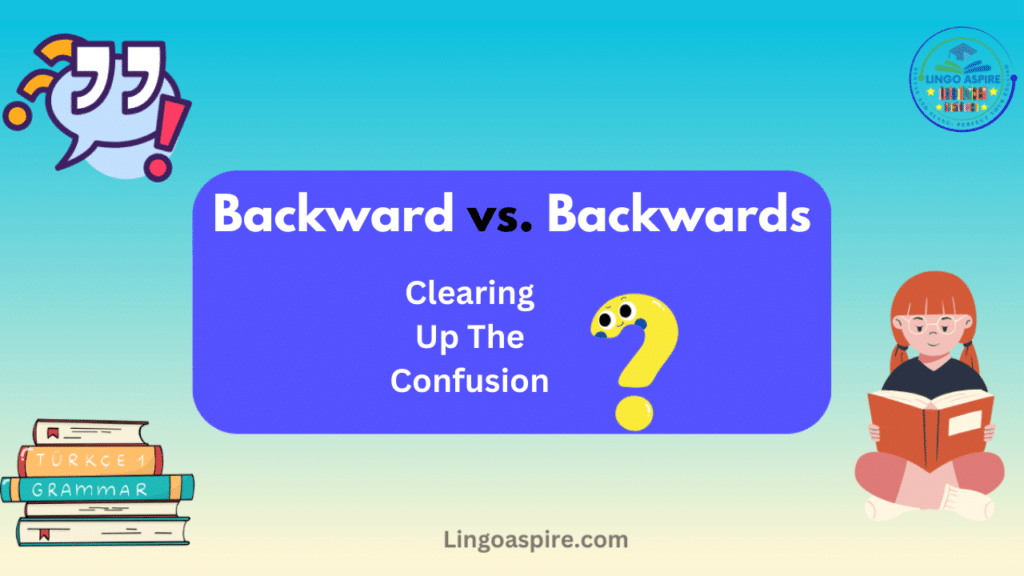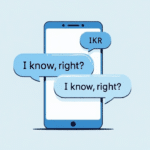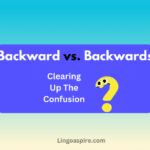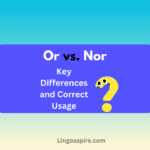Many English learners and even native speakers struggle between backward vs. backwards. Both words appear in writing and speech, making it difficult to know which one to use. The confusion arises from British vs American English usage and differences in grammar rules.
In this article, we will explore the meaning of backward, their grammatical roles, and their correct sentence usage. We will also look at the history of these words, common grammar mistakes, and useful synonyms for backward and synonyms for backward. By the end, you will know exactly when to use “backward” and when to use “backward” in different contexts.
Why Is There Confusion?

People often ask, “Should I say ‘backward’ or ‘backwards’?” The answer depends on language variations and the context in which the word is used.
- American English vs British English: In American English, “backward” is preferred in most cases, while British English often uses “backwards”.
- Grammar rules: “Backward” can be both an adjective and an adverb, but “backwards” is only used as an adverb.
- Word usage: Some people use both forms interchangeably, which can create even more confusion.
Understanding these key differences will help you avoid common grammar mistakes and improve your writing style.
Meaning and Definitions
What Does “Backward” Mean?
The meaning of backward depends on whether it is used as an adjective or an adverb.
- As an adjective, “backward” means “directed behind” or “slow in progress.”
- As an adverb, it means “in the opposite direction of normal movement.”
Sentence examples:
- Adjective: The company’s backward policies slowed its growth.
- Adverb: She walked backward to avoid stepping on the wet floor.
What Does “Backwards” Mean?
The meaning of backwards is simpler because it is only used as an adverb.
- It means “in the reverse direction” or “toward the back.”
- It can also mean “in a way that is the opposite of usual.”
Sentence examples:
- He fell backwards into the pool.
- The clock runs backwards as a special effect.
Since “backwards” is not an adjective, it is never used before a noun.
Key Differences: Backward vs. Backwards
Part of Speech and Grammar Rules
| Word | Part of Speech | Meaning | Example Sentence |
|---|---|---|---|
| Backward | Adjective, Adverb | Behind or opposite direction | She took a backward glance. |
| Backwards | Adverb only | In reverse direction | He stepped backwards quickly. |
British vs. American English Usage
- British English: Prefers “backwards” in everyday speech and writing.
- American English: Uses “backward” more frequently.
For example:
- British: He moved backwards into the room.
- American: He moved backward into the room.
While both are understood globally, using the correct form makes your writing more natural.
Common Mistakes and How to Avoid Them
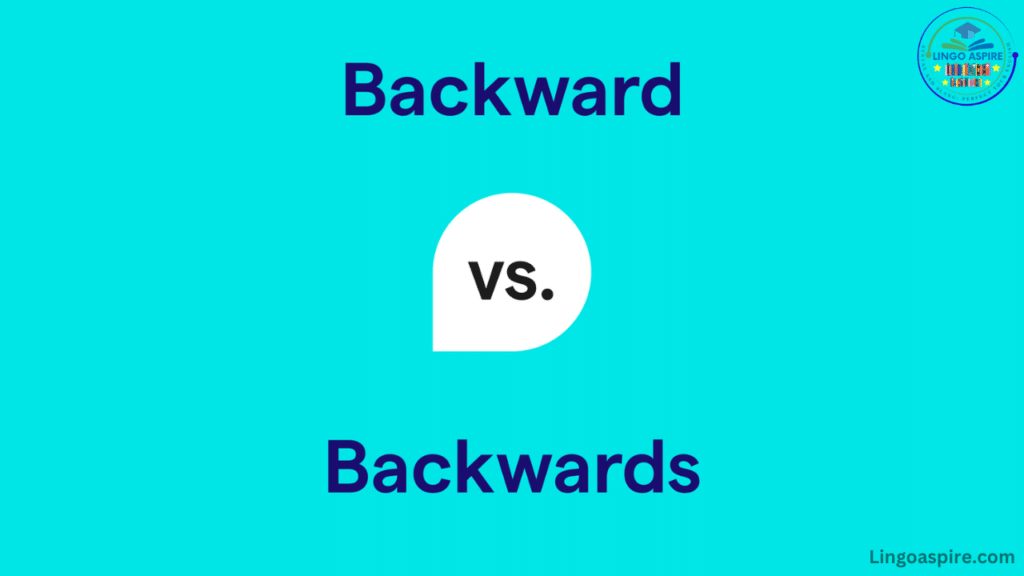
Many people struggle with “Backward” vs. “Backwards” because of regional variations and grammar rules. Below are some common mistakes and ways to avoid them.
1. Using “Backwards” in Formal American English Writing
- Mistake: “He took a step backwards before running.” (In formal American English)
- Correction: “He took a step backward before running.”
- Why? In American English, “backward” is preferred in formal writing and is often used as an adjective.
2. Using “Backward” When an Adverb is Needed in British English
- Mistake: “She walked backward without looking.” (In British English)
- Correction: “She walked backwards without looking.”
- Why? In British English, “backwards” is commonly used as an adverb, making the sentence more natural.
3. Mixing Up Adjective and Adverb Usage
- Mistake: “His thinking is very backwards.”
- Correction: “His thinking is very backward.”
- Why? “Backward” is an adjective, so “His thinking is very backward” is correct.
4. Assuming One Form is Always Correct
- Mistake: “Always use backwards because it’s more common.”
- Correction: “Use backward or backwards based on grammar rules and regional differences.”
- Why? The difference between backward and backwards depends on whether it’s being used as an adverb or adjective and whether it’s in British or American English.
5. Ignoring Regional Preferences in Writing
- Mistake: “He fell backwards on the ice.” (For an American audience)
- Correction: “He fell backward on the ice.”
- Why? In American English, “backward” is preferred, especially in formal writing. However, “backwards” is widely used in British English.
How to Avoid These Mistakes?
- Check if the word is an adverb or an adjective.
- Know your audience (British or American English).
- Use a reliable dictionary like Merriam-Webster for American English and Oxford English Dictionary for British English.
- Read aloud to see if the sentence sounds natural in the given context.
By following these grammar rules and understanding language variations, you can use “backward” or “backwards” correctly every time!
Common Usage Examples
Sentences with “Backward”
- The scientist developed a backward time-travel theory.
- His backward thinking prevented innovation.
- She leaned backward to see the top of the building.
Sentences with “Backwards”
- He walked backwards to avoid the puddle.
- The car rolled backwards down the hill.
- The video played backwards for dramatic effect.
British vs. American English: Patterns and Trends
English has many words where British speakers add an “s” at the end, but Americans do not. Here are some other examples:
| British English | American English |
|---|---|
| Towards | Toward |
| Forwards | Forward |
| Outwards | Outward |
These patterns are important for understanding regional writing styles and linguistic differences.
Which One Should You Use?
If you are writing in American English, “backward” is the preferred choice in most situations. If you are writing in British English, “backwards” is more natural as an adverb.
Remember these rules:
- Use “backward” as an adjective (e.g., “His backward ideas were outdated.”)
- Use “backward” or “backwards” as an adverb, but match your audience’s preference.
Synonyms and Alternative Terms
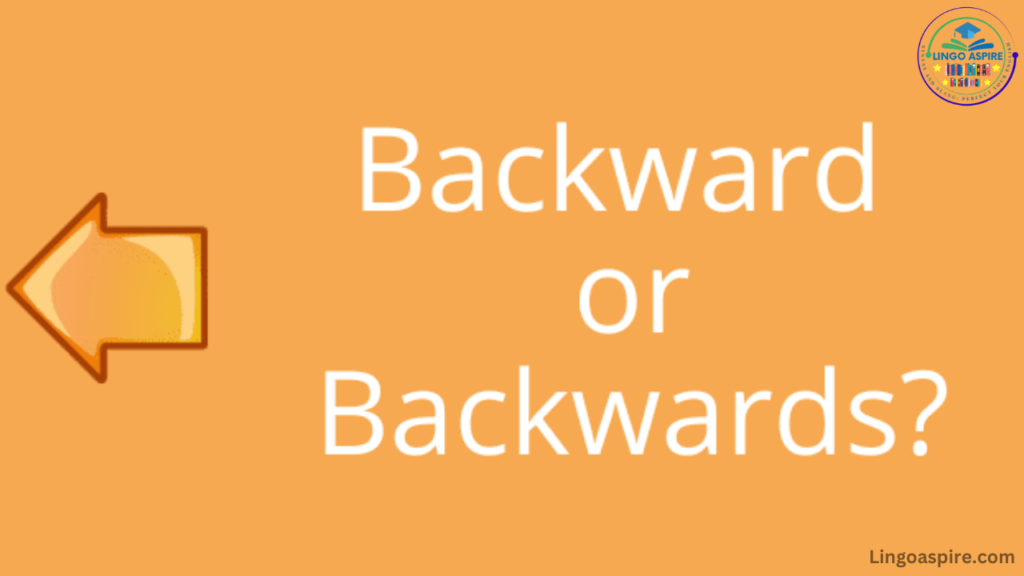
Sometimes, using synonyms can improve clarity and avoid repetition. Here are some synonyms for backward:
| Synonym / Alternative Term | Meaning / Usage | Applies to |
|---|---|---|
| Retrograde | Moving backward in time or position | Both |
| Rearward | Directed toward the rear | Both |
| Declining | Becoming worse or less advanced | Backward |
| Retreating | Moving away or withdrawing | Backwards |
| Behind | Lagging or slow in progress | Backward |
| Backtracking | Going back on a previous action | Backwards |
This table helps clarify alternative words for both backward and backwards in different contexts.
Etymology: The Origins of “Backward” and “Backwards”
History of “Backward”
“Backward” comes from Middle English “bakward,” which meant “toward the back.” It has been used in English since the 14th century.
History of “Backwards”
“Backwards” developed later as a variation of “backward,” following the pattern of other adverbs like “towards” and “afterwards.” It became common in British English by the 17th century.
FAQs About Backward vs. Backwards
1. Is “backward” or “backwards” correct in American English?
Both are correct, but “backward” is preferred in formal writing and when used as an adjective (e.g., “a backward glance”). “Backwards” is sometimes used in casual speech but is less common in American English.
2. Do British and American English treat “backward” and “backwards” differently?
Yes. In British English, “backwards” is commonly used as an adverb (e.g., “He moved backwards”), while “backward” is used as an adjective (e.g., “a backward step”). In American English, “backward” is often used for both cases.
3. Can “backward” and “backwards” be used interchangeably?
Not always. If you’re using the word as an adjective, always choose “backward” (e.g., “a backward society”). If you’re using it as an adverb, follow regional preferences—“backwards” in British English and “backward” in American English.
Conclusion
Both “backward” and “backwards” mean moving in the opposite direction, but their usage depends on grammar rules and British vs American English usage.
- “Backward” can be an adjective and an adverb, while “backwards” is only an adverb.
- British English prefers “backwards,” while American English prefers “backward.”
- Always match your usage to your audience to maintain clarity and consistency.
By following these guidelines, you can avoid common grammar mistakes and improve your writing style. Now, the next time you hear someone ask “Backward or backwards?”, you’ll know exactly how to answer!
Sources
- Details: Provides definitions, grammar explanations, and usage examples of “backward” and “backwards” in both British and American English. It also discusses parts of speech and regional variations.
- Details: Offers definitions, pronunciation, historical origins, and common grammar rules regarding adverbs and adjectives in American English. It also explains synonyms for backward and backwards with sentence examples.
3. Oxford English Dictionary (OED)
- Details: Covers linguistic differences, the history of the words, and how their meanings have evolved. It also discusses common grammar mistakes related to their usage.

